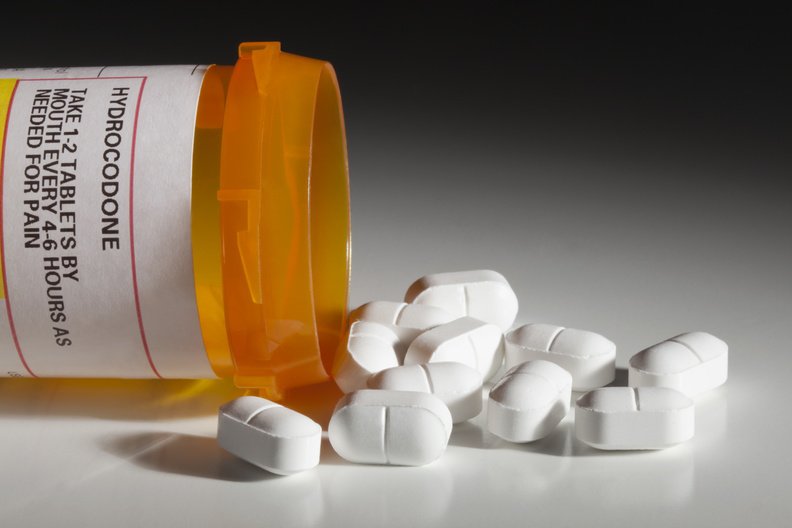San Joaquin County has one of the highest death rates from opioid overdoses in California.
There were 57 such deaths in 2017 or 2½ times the rate in Sacramento County.
At the same time San Joaquin County with 745,429 residents in 2017 recorded 531,281 prescriptions for opioids. Patients will often receive multiple prescriptions during the course of a year that if an average number was 10 it would mean over 6 percent of the county’s population is legally using the highly addictive drug that — if not used properly — can be deadly.
Rajul Patel — a professor of pharmacy at the University of the Pacific who serves on a county task force seeking to combat the problem — said he “was stunned” by data that shows the most vulnerable groups when it comes to opioid addiction and overdoses are senior citizens and pregnant women.
“They are not groups you would typically think of,” Patel said.
Patel spoke about the opioid crisis as well as upcoming UOP sponsored Medicare Part D Outreach Health Fairs during Thursday’s meeting of the Manteca Rotary at Ernie’s Rendezvous Room.
Patel noted the United States is now riding its third wave of opioid abuse that’s powered by synthetic drugs created from fentanyl that in its pure form is 50 times more potent that the basic ingredients in other opioids. The current wave has had a significantly sharper increase and is reaching much higher numbers than the previous waves fed by heroin use and then aggressive prescriptions of opioids to mask pain.
Patel pointed out the only way to counter an overdose is the use of naloxone — also marketed as Narcan — noting it is “like a bullet” that can block the effects of opioids and allow an overdose victim to be stabilized quick enough that they can in most cases be successfully transported to an emergency room for treatment. It is why there is a big push to train first responders in how to administer Narcan and to have them to carry it with them.
“The United States has 5 percent of the world’s population but we have 99 percent of the world’s prescriptions of opioids,” Patel noted.
In 2017 there were 72,000 opioid overdose deaths in the United States. Of those, 1,882 deaths were in California where a staggering 21,707,042 prescriptions of opioids were issued by doctors. There are 40 million state residents.
Patel noted California — particularly via the Interstate 5 corridor — is the main supply line for illegal fentanyl opioids moving into country from Mexico.
UOP sponsored
Medicare Part D
Outreach Health Fairs
Patel is also helping stage eight free UOP sponsored Medicare Part D Outreach Health Fairs in San Joaquin County over the next six weeks.
The closest two are Saturday, Nov. 3, from 10 a.m. to 5 p.m. at Bethany Home, 1350 Nikkel Way, Ripon, (209) 253-5128 and Friday, Oct. 26, from 1 to 6:30 p.m., at the Tracy Community Center, 950 East St., Tracy, and (209) 831-6240. You are asked to make appointments for the free event.
The services available for free are:
*a review of your Medicare part D Plan to see if they can lower your drug costs.
*a review of your drugs to ensure they are safe to take together.
*health screening services including flu vaccine, blood pressure, bone density, cholesterol, diabetes, risk for falls, mental health, asthma, and more.
Patel pointed every Part D insurance plan is different. He added that while there were six Medicare Part D insurance plans offered this year in San Joaquin County the number will jump to 13 for next year for the open enrollment period that closes on Dec. 7.
“Medicare is like an onion. The more layers you peel, the more you want to cry,” Patel said of how complicated trying to navigate insurance plans can be.
Patel noted that 83 percent of the 63 million Americans who are 65 years or older and eligible use Medicare Part D.
He said the screening will determine what plans offer the prescriptions an individual is currently taking and at what cost.
Those attending the screenings will need their Medicare card, all of their medications, and a copy of their most recent lab values.
Even if your plan currently offers your prescriptions every plan changes the list of drugs they cover each year as well as how much you will pay.
Based on past screenings conducted by UOP, 8 out of 10 beneficiaries have been able to save money on their Part D drug costs.
For more information go to go.pacific.edu/Medicare or call (209) 910-3784.
To contact Dennis Wyatt, email dwyatt@mantecabulletin.com
.





